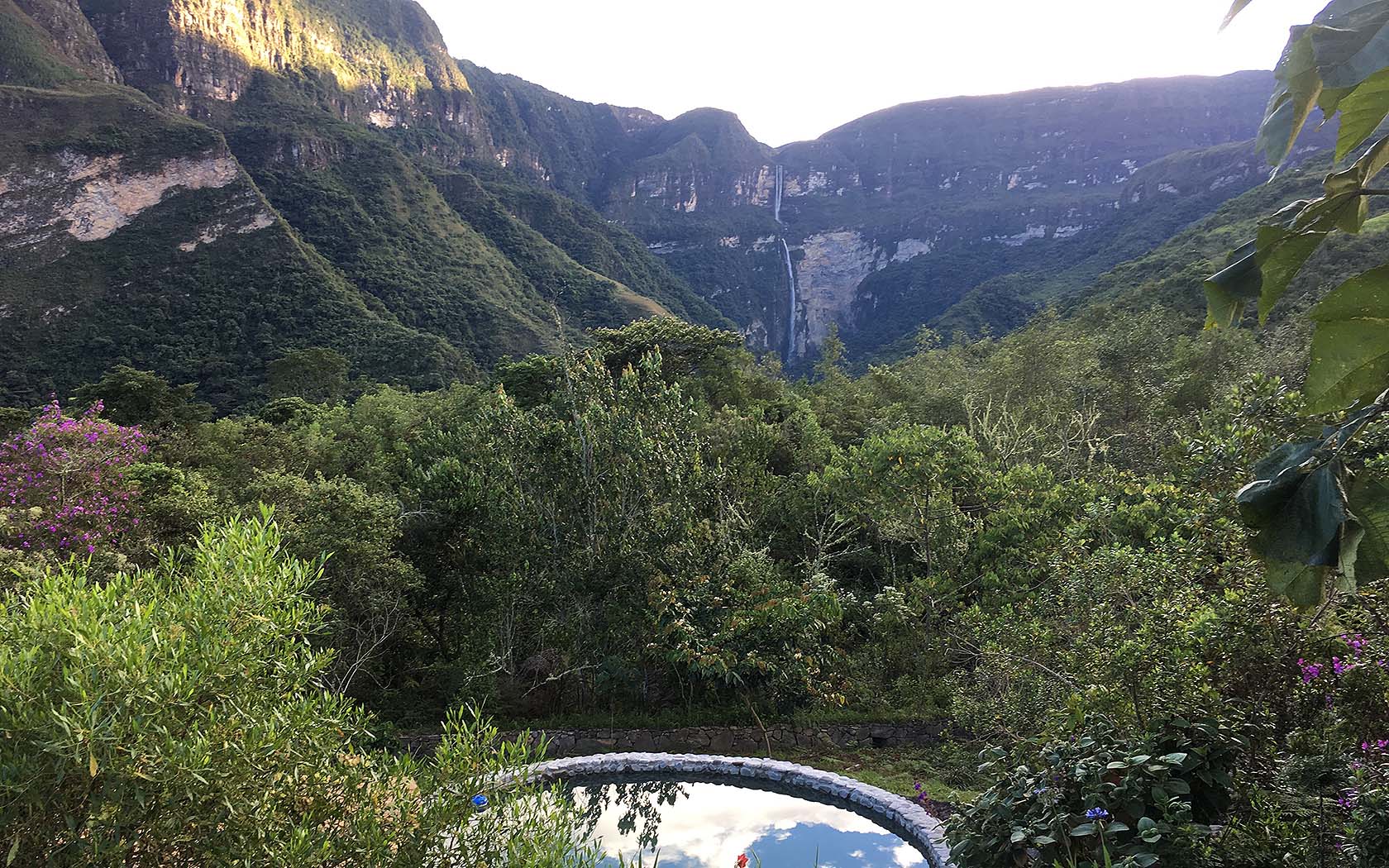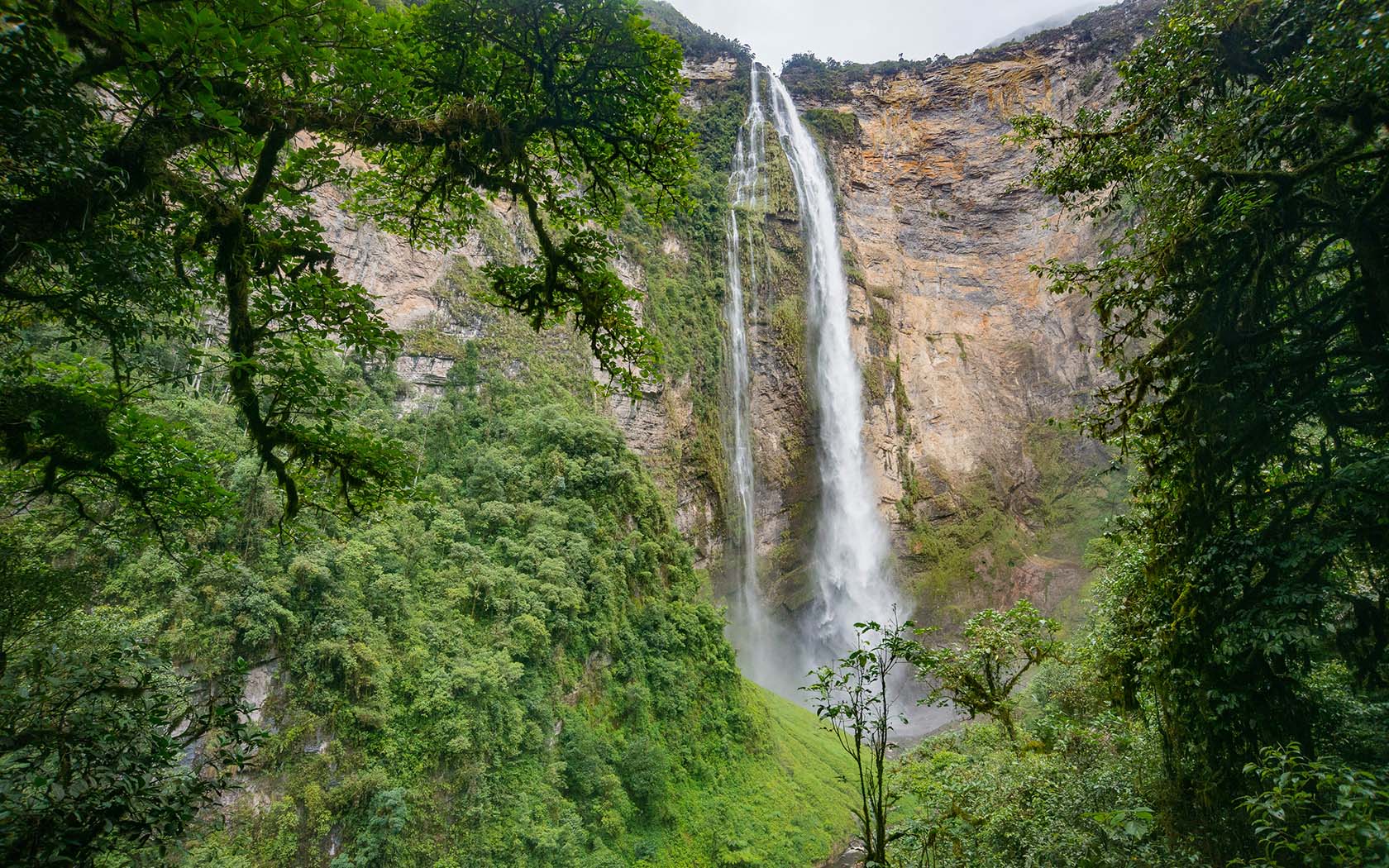Chachapoyas: Somewhere Between Heaven And Earth

Taryn is AWOL's founding editor. She previously edited Beat Magazine…
I’m on a mountain in Peru’s high Amazon, where the rainforest and the mountains intersect, 3000m above sea level. The air is thin, and I struggle to catch my breath, but the oxygen is so pure it feels as though each breath is electrifying my lungs.
I’m a 16-and-a-half-hour flight, a four-and-a-half-hour drive, a 25-minute cable car ride, and a 25-minute hike from home.
But, sometimes, the best things are the hardest to reach.
[related_articles]53504,52259,50114[/related_articles]While over a million visitors flock to Machu Picchu every year, only a few thousand make the trek to the remote northern area of Peru known as Chachapoyas. I’d never even heard of it before I was due to travel there, which, looking back, seems absolutely absurd for a place so perfect, I couldn’t have dreamt up if I tried.

The name ‘Chachapoyas’ refers to the indigenous people that long ruled over the northern region of Peru, now known as Amazonas. Fittingly, the Chachapoyas were also called “warriors of the clouds”. Kuélap, which has been called the “Machu Picchu of Peru’s north”, was one of their ancient citadels and urban centres, and its ruins sit on the ridge of a very high mountain overlooking the patchwork patterns of the Utcubamba Valley.
Built in the 6th century AD, the citadel is older than Machu Picchu, with city walls reaching up to 20m high and the remains of over 500 circular houses. José Rigoberto, our local guide, refers to our location as the “bellybutton of the planet” – a sacred place of connection to Pachamama, the goddess of the earth revered by the indigenous people of the Andes.






There’s certainly an emotional gravity to the site, and maybe it’s just the thin air, but wandering around the ancient ruins elicits a visceral response.
Although the journey to Kuélap is a long one, not too long ago, it was even longer. That is, before Peru’s first cable car cut out a bumpy, winding two-hour bus journey to the base of the archaeological site. This feat of engineering means it now takes just 25 minutes to cross a deep, green valley and glide up a seriously steep mountainside to the citadel’s base.
On the way out, we stop in at a tiny nearby town for lunch. It’s modest, quiet, and there are very few paved roads. Despite this, someone has intricately carved over 20 hedges into the shapes of dozens of animals – butterflies, reindeer, a weird gecko – in the city square. Peru is absurd and awesome.

A few hours away, in the small village of Cocachimba, I meet my horse. He is a strong horse, but there’s one problem – I don’t know how to ride him. And my Spanish kinda sucks. And the person gesturing for me to just climb on is an actual child. And the child is my guide for the day.
In the name of adventure, I climb the steps and throw a leg over the horse – who is fat and slow, so we immediately get along – and we all prepare to take the slippery path down to the base of the waterfall.

In the distance, the impressive Gocta Falls – which are among the world’s tallest – are like a giant arrow signalling our destination. Whatever leg muscles are required to ride a horse down a mountain, I certainly don’t possess. Still, being on a horse’s back is exhilarating, and I embrace the bizarre thrill of it until we reach the halfway point, where we dismount to hike the rest of the way.
[related_articles]49231,29942[/related_articles]Our local guide, Maria, walks us through the lush rainforest, encouraging us to rub plant juice that acts as a natural insect repellent on our arms and explaining that Peru has over 3800 potato varieties. The thick forest canopy crowds in overhead as we stop at seven scenic lookouts over the waterfall to which we’re headed.



When we finally reach the base, the cascade is like a hallucination – a shifting watercolour painting, almost too vast to take in. If I could pause a moment, it would be here, just us and Peru’s best-kept secret, at the base of this natural wonder as-yet un-clocked by other tourists.
But after half an hour of near-silent reverie, it’s time to go.

Our base in Chachapoyas is Gocta Natura, in the town of Cocachimba. It’s not a hotel; it’s a home, stretched out across private cabins on a patch of land so green and serene that you can’t help but wake up content.
Rocio Flores, who owns the property with her husband, joins us for most meals, which are made with ingredients grown on-site – lettuce, blueberries, macadamia nuts and avocados – and lashings of TLC. There are two beautiful dogs, roosters as alarm clocks, a common room with a fireplace, a picturesque plunge pool, and five delightful cabins, all fitted with two outdoor chairs positioned to frame Gocta Falls just so – an open invitation to sit down and observe the implausible beauty of the world.


Conservation is a way of life at Gocta Natura, and Rocio is deeply involved in many community projects to help bring sustainable tourism to the area.
Rocio’s love for the region runs deep. She explains that she was drawn to the area 10 years ago, right after the falls – which were always known to the local people – were “discovered” by the outside world, care of a German explorer. Rocio and her husband made the long journey to see Kuélap, and a friend put Gocta, and the waterfall-heavy cloud forest it resides in, on their radar.
“I’d heard about the Gocta waterfall, but I’d not registered it,” she says. “Kuélap seemed so remote for us…When we came, it seemed so pure. My husband and I had been looking for a place to retire productively, and we found it,” she says.



A place like this leaves an impression. I ask about her first ever trip to the area, what it was like to lay eyes on this place for the first time, and the vivid details come spilling out.
“We came up the road. It was October, but it had rained a lot the week before, so it was really wet. But the sun was out. The waterfalls were all here – there can be 15 or 18. We entered the main plaza and there was a group of women of all ages watching a football game,” she says. “I opened the window and they were looking at us with happiness. It seemed they weren’t used to visitors.”

The memory is a good one. She smiles.
“I asked them, ‘Is this heaven or earth?’”
“They looked at me and they said, ‘It’s somewhere between’.”
Taryn Stenvei was a guest of Visit Peru.
(Lead image: Renzo Tasso via PROMPERU)
[style].drop-letter{font-weight:600; font-size: 3.5em; float: left; padding-bottom: 10px; padding-right: 5px; margin-top: 15px;}[/style]Taryn is AWOL's founding editor. She previously edited Beat Magazine and has contributed to Junkee, Beat and The Brag. She has travelled to over 30 countries and countless cities, leaving plenty of evidence on her Instagram @ninettey.


